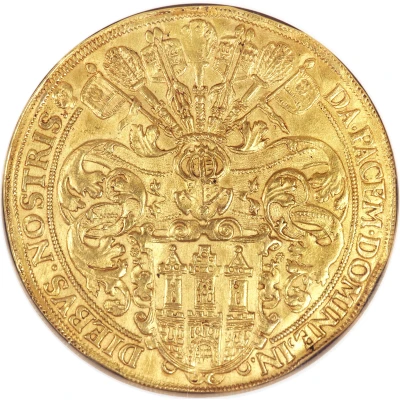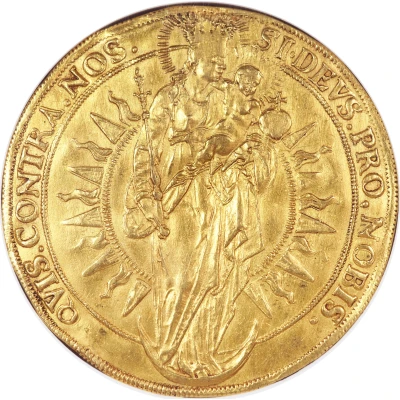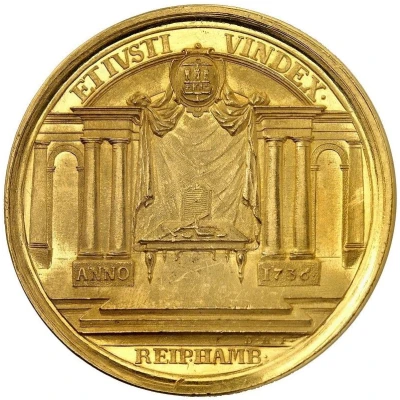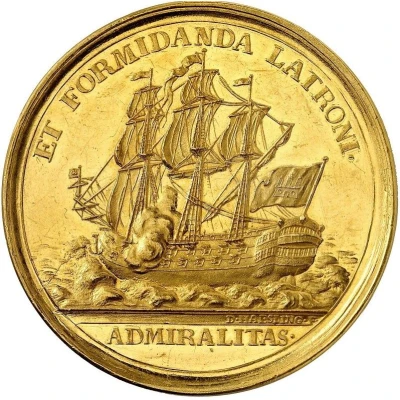


© Fritz Rudolf Künker GmbH & Co. KG, Osnabrück and Lübke & Wiedemann KG, Leonberg
10 Ducats
1689 year| Gold (.986) | 34.66 g | 50.31 mm |
| Issuer | Free Hanseatic city of Hamburg (German States) |
|---|---|
| Period | Free Hanseatic City (1324-1922) |
| Type | Standard circulation coin |
| Year | 1689 |
| Value | 10 Ducats (35) |
| Currency | Thaler (1552-1674) |
| Composition | Gold (.986) |
| Weight | 34.66 g |
| Diameter | 50.31 mm |
| Shape | Round |
| Orientation | Medal alignment ↑↑ |
| Demonetized | Yes |
| Updated | 2024-10-05 |
| Numista | N#320403 |
|---|---|
| Rarity index | 97% |
Reverse
Four ornate shields (Venice, Amsterdam, Hamburg and Nürnberg)
Script: Latin
Lettering:
BANCHORUM IN EUROPA BONO CUM DEO ERECTORUM MEMORIA MDCLXXXIX
H B M
Interesting fact
One interesting fact about the 10 Ducats 1689 coin from the Free Hanseatic city of Hamburg is that it features a unique design element - a small hole in the center of the coin. This hole was intentionally drilled into the coin as a way to test its authenticity. In the 17th century, counterfeit coins were a common problem, and this hole was used as a way to ensure that the coin was made of real gold and not a fake. This feature is not commonly found in other coins from the same time period, making it a distinctive characteristic of the 10 Ducats 1689 coin from Hamburg.



